Triathlon and the Bar

Y ou don’t have the time or energy to do a triathlon. Understood. You’ve got a crook knee, back, shoulder, whatever. We all do. But think about this: how many hours are you spending at your desk pondering? How often are you in the car or on the train mulling? This is where triathlon comes in.
There’s something almost hypnotic about swimming which is perhaps why some of your best ideas and eureka moments will strike while you’re staring at the black line. 'My goodness what was I fretting about?' you’ll say to yourself after another lap. 'That crucial piece of evidence in my opponent’s case is inadmissible,' or 'Eureka! I know how to settle this dog’s breakfast of a matter,' you’ll exclaim after another tumble-turn. All of these moments, these breakthroughs, await – followed by the thought 'Why didn’t I think of that sooner?' – at the pool.
And if swimming is great for problem solving then cycling is conducive to organisation. You can write, rewrite and rehearse an opening, a closing, a cross-examination or an argument all while pedalling along. Sure, you’ve got to be mindful of where you’re going and what the traffic’s doing, but those breaks in concentration get you court-ready. There’s nothing like a beep of a horn or a wrong turn to jolt you back to the present and after a good jolt you can get back into your head, back to what you were muttering before: 'Yes Your Honour, as I was saying…'
So what’s running good for? Well, it’s just good for you. It’s the hardest of the three disciplines, a known fat-burner and it’s the most time-efficient of the three sports.
So you’re going to give triathlon a go? This is what you do next: make time for training every day. Preferably in the mornings, but there’s nothing wrong with the evenings. You’re going to start sleeping better so don’t be surprised if you rise at a similar time and then head out the door for a jog, swim or ride after a coffee or light breakfast.
Start with walking if you’ve never been a jogger and build up to 20 minutes before mixing in some jogging and add time and speed as the weeks tick by.
If you’re not a swimmer, pinch a foam pull buoy (you’ll find that children and public pools are the best targets for this kind of larceny), stick it between your thighs and start windmilling away. The pull buoy will help your backside and legs float so you can focus on your arms. It’s hard work, but the simplest way to get that upper body going.
If you don’t have a bike, borrow one. Someone on your floor or a friend or a solicitor will have one sitting in a garage unused. It will be $4000 to $10,000 worth of carbon fibre purchased during a mid-life crisis. And while you’re there, pinch their helmet, cycling shoes, everything.
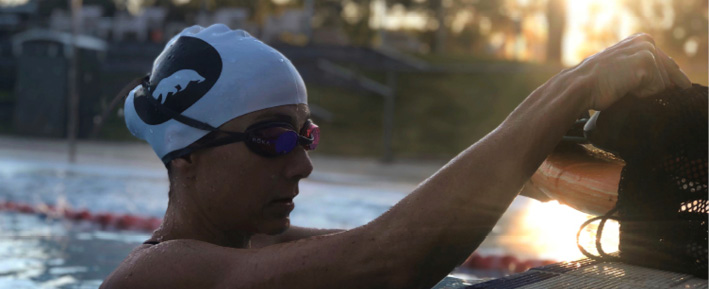
So do I just swim, ride and run?
No. In the pool you’re going to swim hundreds of laps with 10 seconds rest between each lap. On the bike you’re going to ride fast and slow, up hill and down. When you run, you’re going to mix up the pace to improve at a quicker rate.
Saturdays and Sundays are good for riding because it’s the most time-consuming discipline. You’ll start with an hour then build the duration each week before throwing in some hills.
Try and swim every second day. Swimming is about rhythm. A couple of days out of the pool and you lose it. Stick that pull buoy between your legs and see how you go. Start with 10 laps of a 50m pool or 20 laps of a 25m pool and go from there. Remember, 10 seconds rest after each lap. And if you didn’t learn how to swim as a kid here’s a tip: keep your arms straight and push your hands all the way through the stroke to your hip. Or YouTube Janet Evans. Good enough for her, good enough for you.
Try and run every second day. You could add a 10-minute run to your weekend bike ride, maybe try for a slow Sunday morning run on tired legs, then throw in some speed work on Tuesdays and Thursdays.
When will I be ready for a race?
Whenever you want to. Find a short one and see how you go. The smallest races are around 300m for the swim, 10km for the bike and 3km for the run. There are little corporate races in the cities and longer races in the towns up and down the east coast.
Eventually you’ll hear about a thing called an Ironman. This is a 3.8km swim, a 180km ride and a 42.2km run. Yes, that’s a marathon at the end of the bike. The professionals can knock one over in about eight hours. Mere mortals take anywhere from nine to 17 hours.
Do I have to wear lycra and those clippy-cloppy cycling shoes?
No, but eventually you will. The clippy-cloppy shoes clip in to the bike’s pedals and increase speed and efficiency immediately. Hopefully you’ll have the same shoe size as the friend or acquaintance whose bike you stole earlier.
As for lycra, you’ll eventually wear it in the pool, on the bike and in races. There’s nothing wrong with shirts and shorts for jogging.
Should I spend $10,000 on a bike?
Start by borrowing a friend’s road bike and then if you get serious consider buying a triathlon specific bike. Road bikes are a traditional frame you see the Tour de France cyclists on. Triathlon bikes are for time-trialling. You are seated further forward with your arms and hands tucked in front of you in a pursuit position. The different positioning combined with the improved aerodynamics results in faster bike times and better run times because you’re not as bunched up as you are on the road bike.
Triathlon specific bikes start from about $5000 and go through to $20,000 complete with carbon-fibre race wheels, electronic gear shifting and built-in storage to carry food, water and puncture repair kits.
Will a $350 pair of shoes improve my running?
No. Nike pioneered the $300+ market by designing a shoe for Eliud Kipchoge. Kipchoge was the first man to break two hours for the marathon. Think about that. Kipchoge can run in excess of 21km/h for 42.2km. Now set a treadmill at 20km/h (most can’t go faster than that) and see how long you last. Better still, film it and share the results.
Go for a pair of lightweight trainers or racing shoes for less than $200. Don’t let some 16-year-old sales kid talk you into an expensive, heavy shoe that sounds as though it’s got more technology in it than a Tesla.
When you run, take short quick steps, not long loping ones. You’ll reduce your risk of injury dramatically.
Do I need to learn any lingo?
Yes. If you hear a cyclist or triathlete say they 'bonked' on the bike on the weekend what they really mean is they experienced a sudden drop in blood sugar resulting in lethargy and fatigue.
If they ask you 'What did ya get out?' they’re inquiring about the distance and duration of your most recent training session.
If they suggest you should join their training group tell them you’re a shift worker on a rare day off and couldn’t possibly make any of their sessions or pretend you don’t speak English. Unless of course you enjoy the company of physiotherapy students who count the number of sugar granules added to their coffee or corporate dudes who’ve chucked in yachting or ultra-distance marathoning and want to tell you all about it.
Can you really do an Ironman triathlon while at the Bar?
Yep, it’s been done dozens of times. A typical work day starts with training then breakfast. Then there’s a pre-court coffee and snack followed by another coffee and snack during morning tea. More coffee, food and water at lunch and then another training session in the evening.
With increased activity comes increased metabolism. You’ll sleep better and need to eat and drink more, especially water.
Your Saturdays will start with a long ride of up to five hours followed by a run of 20 to 30 minutes. You’ll do a long run on Sundays anywhere from one hour to two-and-a-half hours plus a swim Sunday afternoon. You might do a long hard swim Monday morning or a short ride-run instead.
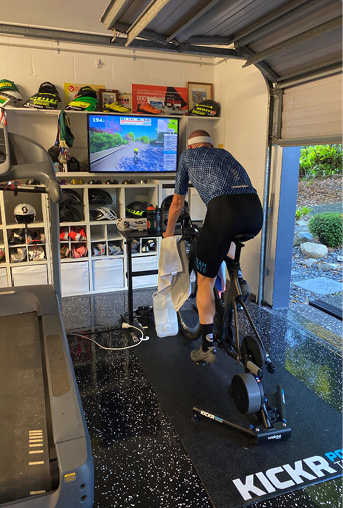
During the week you’ll do a mix of speed runs on tired legs, swims on tired arms and some speedwork on the bike. There’s nothing wrong with treadmills, in fact they’re an excellent way to train. Try 10 minutes of easy jogging and then dial up the speed. Start with 30 seconds fast and 30 seconds standing on the side of the treadmill then repeat 10 times through. Then next week do 15 lots of 30 seconds hard and 30 seconds rest, then 20 the week after and so on. Always finish these sessions with five minutes of slow jogging or walking.
Sit your bike on a windtrainer or 'ergo' as they’re sometimes known. The bike remains stationary while the back wheel spins on some form of resistance. These are great training aids also. Start with short, sharp intervals of one or two minutes and build up the number of intervals over time. When you ride on the road, do longer intervals of five or 10 minutes duration.
After six months of long rides, long swims and long runs coupled with shorter interval sessions on weekdays you’ll be as ready as you’re going to get.
So that’s a start.
If you don’t have a bike, borrow one. Someone on your floor or a friend or a solicitor will have one sitting in a garage unused. It will be $4000 to $10,000 worth of carbon fibre purchased during a mid-life crisis. And while you’re there, pinch their helmet, cycling shoes, everything.
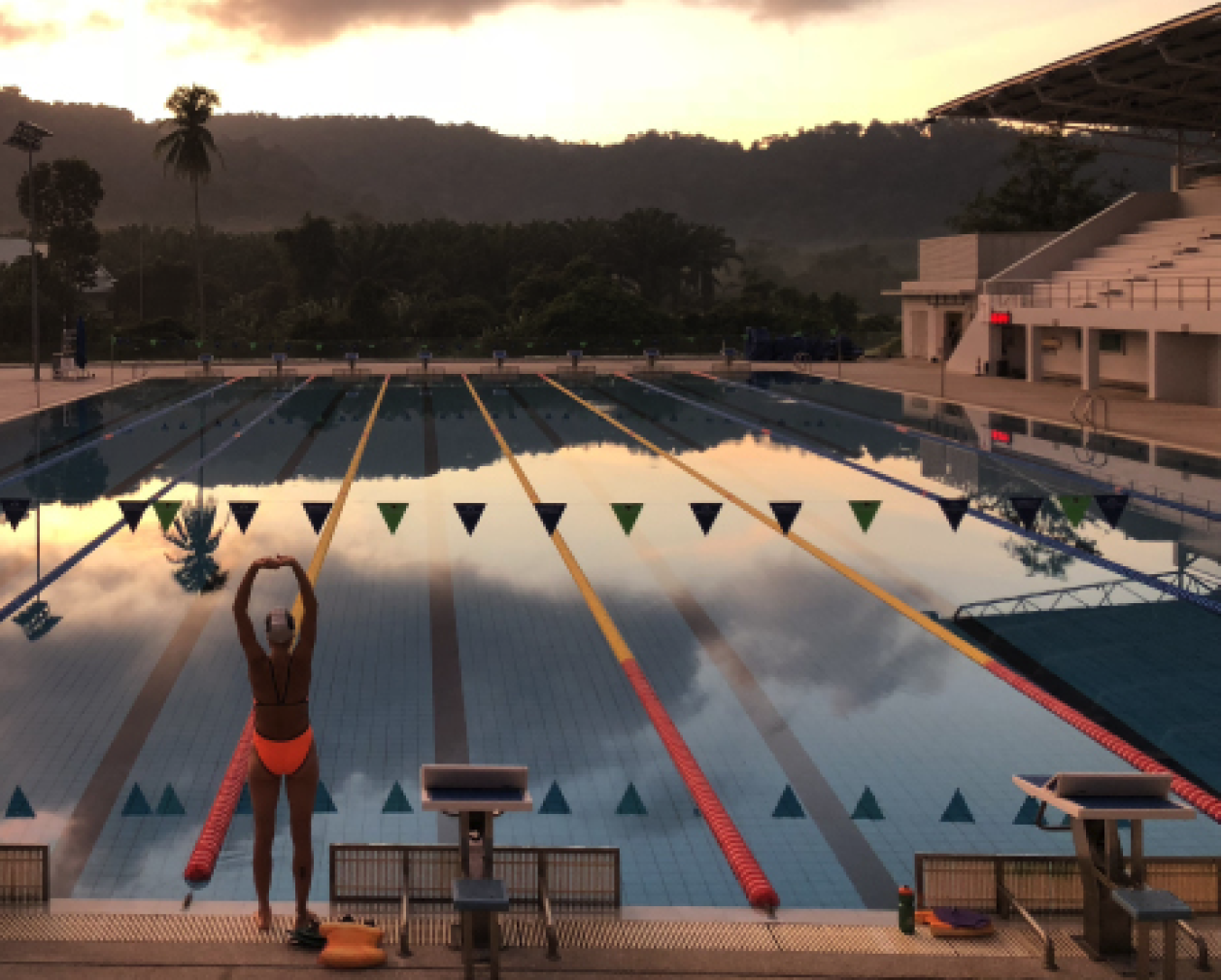
Julie Wright
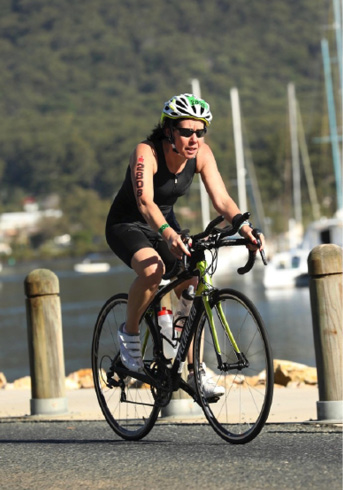
Julie was called to the Bar in 2013 and practises predominantly in construction law at Greenway Chambers. She regularly appears in a range of courts, arbitrations and expert determinations and is a practising arbitrator.
How did you get into triathlon?
I dabbled with some small triathlons in my 20s, then woke up on my 45th birthday with a mid-life crisis ambition to do a full blown Ironman.
How do you fit it in around work, family and other commitments?
I have a huge amount of support from my family. I often train very early in the morning, I use running as a form of commuting – whether to chambers or to do errands – and I have an indoor bike trainer where I do almost all of my cycling, which has a desk that I can work at while training. You can read a lot of evidence on a seven-hour training ride.
What’s the longest race you’ve done and the hardest race you’ve done?
I did my full Ironman in May 2019 in 14 hours and 31 mins. It was very tough and my lowest moment was at the end of the bike leg when I realised that I still had to run a full marathon. The whole experience was, however, amazing and the sense of achievement when I crossed the finish line was unparalleled.
How does training complement your work and family life?
My daughter said she’s going to ask Santa for some new parents because we woke her up at 4am one morning to support me in a half-Ironman.
What’s your best tip for someone giving swimming, cycling or running a go for the first time?
Swimming is like the Bar exams, it’s the gate that keeps most people out. Don’t be deterred. If your swimming technique is as bad as mine get a couple of lessons from a professional and then just grit your teeth. Biking is a great excuse to buy loads of fabulous kit. You will get used to the cleats and you’ll go much faster when you do. Running is my personal favourite and it’s the easiest to improve on. If you’re at the Bar, chances are you might be a tad competitive. Join Strava and start with a Parkrun. Once you are beating your mates, you’ll love it.
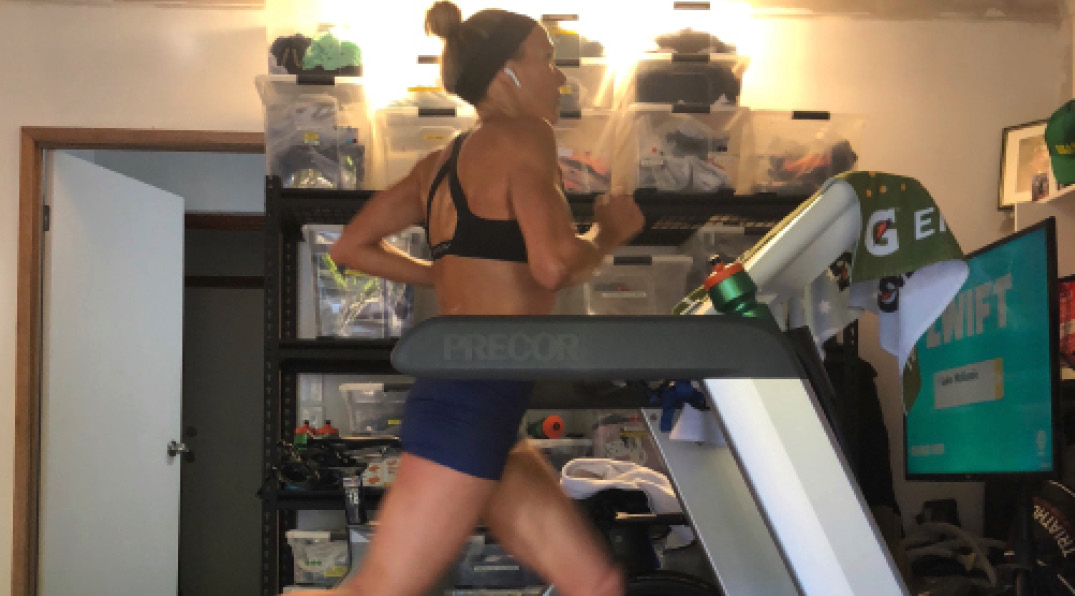
Michael Gleeson

Michael has been at the NSW Bar since 2010 and joined the DPP as a Crown Prosecutor in 2020. Prior to his arrival in Australia he was a barrister practising predominantly in criminal law in the UK.
How did you get into triathlon?
In 2000 a small group was formed in Manchester in the United Kingdom to swim 200m, bike 15km and run 3km in a gym. I was hooked.
How do you fit it in around work, family and other commitments?
I’m a better human being if I can train. I’m usually up at 5am and try and squeeze something in before work.
What’s the longest race you’ve done and the hardest race you’ve done?
I’ve completed six Ironman races (3.8km swim, 180km ride and 42.2km run).
How does training complement your work and family life?
It’s getting more difficult as my children move into sport, but where there is a will there is a way.
What’s your best tip for someone giving swimming, cycling or running a go for the first time?
Join a club. I’m on the board of Triathlon New South Wales and we have an incredible club culture.
Peter Newton
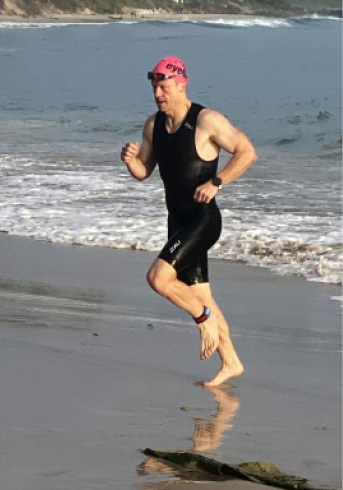
Peter has practised as a barrister since 1997. He practises mainly in the areas of equity, commercial, property, insolvency and probate litigation. Since 2019 he has served as a part-time member of the Migration and Refugee Division of the Administrative Appeals Tribunal.
How did you get into triathlon?
I needed an incentive to exercise. In January this year I saw an advertisement for the triathlon in Byron Bay in May and thought that would be enough time to get into shape and a good excuse to have a weekend in Byron Bay. My daughter thought it would be a good opportunity to see Chris Hemsworth and Melissa McCarthy and Matt Daaaaaaaaaaamon.
How do you fit it in around work, family and other commitments?
Rather than getting the train, I run and bike to and from work. I do one to two early morning sessions a week and treat each training session like any other work commitment. I also have a patient and understanding wife and daughter who seem to prefer me outside and exhausted.
What’s the longest race you’ve done and the hardest race you’ve done?
The Byron Bay triathlon was my first triathlon. I have run a few marathons which I found harder to train for than the triathlon. The hardest marathon was New York in 2014. The wind was so strong that day that the wheelchair athletes were not permitted to ride over the Verazzano Narrows Bridge and I had to zig zag throughout the course for shelter from the wind.
How does training complement your work and family life?
It provides a break from work, clears the mind and distracts me from worrying about the little things. Whenever I’m stressed, it’s usually the last thing I want to do but the first thing I need to do. I run one or two sessions a week with my daughter and try to keep up. My wife, daughter and I are members of a running club – The Run Squad – which brings us together with runners from all ages who are very supportive.
What’s your best tip for someone giving swimming, cycling or running a go for the first time?
I think it’s important to begin with a short distance and slowly build from there. If you take on too much too early, you may burn out. After four to six weeks of regular training your capacity will increase, times decrease which is tremendously rewarding.